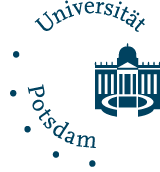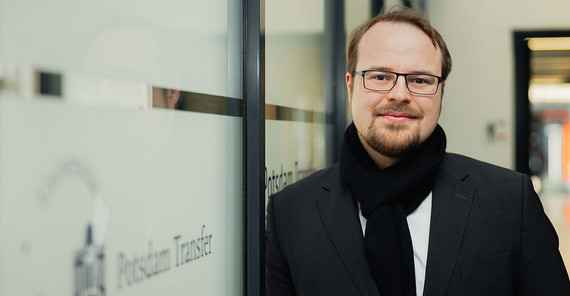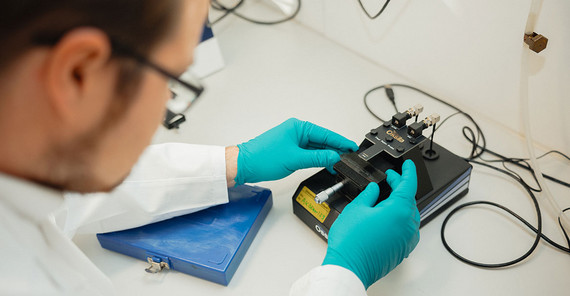Dr. Gurke, what exactly are photochemistry and 3D bioelectronics?
Photochemistry refers to chemical reactions under the influence of light. We use such reactions to produce conductive polymers in order to be able to later generate an electrically conductive material from high-viscosity resin in a 3D print using light. Bioelectronics uses such materials to measure electrical signals in biology, for example from nerves or the heart.
What goal are you pursuing with your research?
We dream of producing complex and application-specific structures using 3D printing. We want to be able to determine whether we are producing a conductive or an insulating material in the 3D printer with the help of the irradiated color of light.
How did you get this idea?
I come from the field of photochemistry, so I have always been fascinated by light and chemistry. During my research stay in England, however, I collaborated intensively with electrical engineers and neuroscientists and discovered its potential for future applications. During a research stay at the University of Cambridge, I combined 3D printing with conventional techniques from the semiconductor industry to produce bioelectronic devices. This was very time-consuming, and the question arose as to how conductive materials could be processed more easily. The more I dealt with this application-driven question, the more I realized that it was a fundamental chemical problem and that I could solve it. The specific aim of the study was to synthesize conductive polymers using light. In addition, there was a new concept from the USA that made it possible to adjust mechanical properties in 3D printing by selecting a certain wavelength of light. We now want to transfer this concept to electrically conductive properties.
What can be done with this?
In the long term, this will enable us to manufacture state-of-the-art biomedical products with light. These devices will then enable neuroscience and neurosurgery to measure brain activity with the highest precision, thus improving our understanding of it. The devices, which are manufactured using 3D printing, are intended to be easily adaptable to specific brain regions and to individual patients in a cost-effective way.
Your project is funded within the NanoMatFutur competition for junior researchers of the German Federal Ministry of Education and Research (BMBF).
A sufficient budget for staff and materials is crucial for our work, and without research funds, it is often impossible to realize promising ideas. Potsdam Transfer helped us build a bridge to industry. In this way, we were able to convince not only the BMBF but also three leading companies in this field that our application-oriented basic research has the potential to significantly simplify the production of medical devices and provide individual solutions for patients – an innovation that contributes to making the healthcare industry sustainable and fit for the future.
You were able to obtain funding from the BMBF for a second project through the „KMU innovativ“ program. What is this about?
Here we have been cooperating with xolo GmbH for two years. The Berlin-based company has developed an innovative 3D printing technique called xolography, which opens up new possibilities in the production of three-dimensional objects. A resin is cured quickly and resource-efficiently using two different colored light beams. This enables the production of biocompatible materials that can be used safely for living beings over a long period of time and without negative consequences. This technology, which is already being used to produce complex objects, has enormous potential for hybrid applications such as the combination of electronics and 3D printing. In the collaboration with xolo, we are contributing our scientific expertise to make its innovation usable for biomedical engineering. The technology offers interesting approaches, especially in drug development, and could help replace animal testing.
Johannes Gurke has been researching applied photochemistry and 3D bioelectronics since 2022 at the University of Potsdam.
With Potsdam Transfer from the lab into industry
Knowledge creates value. Generated within the university and then disseminated, it has an impact on the business sector, where it can unfold its full potential. By using research knowledge created at universities, companies adapt to new requirements and increase their competitiveness. Potsdam Transfer, the central institution for start-ups, innovation, and the transfer of knowledge and technology at the University of Potsdam, identifies application-oriented research projects, searches for and arranges collaboration partners in industry, and advises on financing options for the implementation of the project.
https://www.uni-potsdam.de/de/potsdam-transfer/transfer/wirtschaftskooperationen
This text was published in the university magazine Portal – One 2025 “Children” (PDF).


